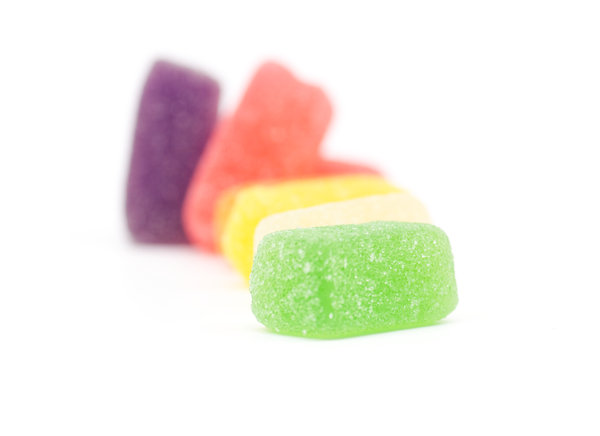Candies like jelly make us happy, so why avoid them?
Jelly is a small sweet made with gelatin. It’s a combination of fruit, pectin, acid, and sugar.
People have this perception that anything which has sugar will make them gain weight and jelly is one of them!
Let’s discuss everything about jelly and find out if it makes you gain weight or if one can still enjoy it while losing or maintaining their weight!
About jelly!
This kind of dessert was first recorded as jelly by Hannah Glasse in her 18th-century book “The Art of Cookery”, appearing in a layer of trifle.
Jelly or Jello (also gelatin) desserts are made with a sweetened and flavored processed collagen product (gelatin).
When is it Best?
Jelly is available year-round in the supermarket, so you can add it to your grocery list all year long.
You can also sometimes find jelly in farmer’s markets, where you can purchase homemade options from local vendors.
Sweeteners used in jelly
Sweeteners used in jelly are typically aspartame, an artificial calorie-free sweetener or sugar.
Artificial flavors are used in jelly. These are chemical mixtures that imitate a natural flavor.
Different forms of jelly
Jams, jellies, and preserves are foods with many textures, flavors, and colors.
They comprise fruits preserved mostly using sugar and thickened or jellied to some extent.
Types of jelly
- JAM: It is made from crushed or chopped fruits and sugar. It holds its shape, but it’s less firm than jelly.
- JELLY: is a semi-solid mixture of fruit juice and sugar that holds its shape.
- PRESERVES: are made of small, whole fruits.
- MARMALADES: these are soft fruit jellies with small pieces of fruit or citrus peel.
Tasty combinations people make with jelly sweets and jam!
The world has a variety of different jellies.
Some people like to sprinkle it over their ice cream.
Some like it with their fruit or plain yogurt.
Some people like to have the famous peanut butter and jam combo, and some like to have it with salted butter.
Contents
Jam vs. Jelly
Jam
- Jams are made from crushed or ground fruit in a thicker paste
- Jam is not clear.
- You may find fruit chunks throughout it.
- Jams can be made with or without pectin.
Jelly
- Jelly is made from fruit or vegetable juice.
- They have a clear appearance
- Jelly must have added pectin to stay firm and in its shape.
Nutritional facts
Jam, jellies, and marmalade have almost the same calories but have some minor differences in macronutrients.
1 tablespoon of each of them has the following nutritional content:
JAM:
- Calories: 56g
- Carbs: 13.8g
- Sugar: 9.7g
- Fiber: 0.22g
- Protein: 0g
- Fat: 0g
JELLY:
- Calories: 56g
- Carbs: 14.7g
- Sugar: 10.8g
- Fiber: 0.21g
- Protein: 0g
- Fat: 0g
JELLY SWEETS:
Sweet little treats have the following nutritional content:
- Calories: 37g
- Carbs: 9.7g
- Sugar: 7.17
- Protein: 0.02g
- Fat: 0g
Is jelly good for losing weight?
Losing weight is one of the biggest challenges today.
People who start their weight loss journey often cut sugar from their diet first.
But to cut out one thing from your diet will not make you gain or lose weight.
Jelly has a high sugar content, but it’s a sweet treat that everyone enjoys!
Eating a small portion of it will harm no one.
What can jelly do to our bodies?
There are some benefits and adverse effects of jelly.
BENEFITS
- Jelly adds carbohydrates to your diet, and carbs are the body’s preferred energy source.
- Jelly is served in hospitals because of its soft and easily digestible characteristics.
- It may promote blood sugar level stability if the jelly is made with fructose.
ADVERSE EFFECTS:
Consuming too much of it can cause the following problems:
- bloating
- Blood sugar spike
- Tooth decay
- Weight gain
- Diabetes
Is jelly healthy to eat?
All these kinds of jellies are low in calories and fat-free if we look at their per serving amount.
But considering its high sugar and low fiber and protein content makes it an unhealthy food option.
But that’s if you don’t take it in a moderate amount.
Is sugar-free jelly available?
Yes! Sugar-free jellies and jams are available, which are low in carbs and calories.
Diabetic patients and people who want to save up their calories while still having jelly or jam can use them.
Is sugar-free jelly healthy?
If it’s sugar free, it’s surely sweetened with some artificial flavors.
The bottom line to every healthy or unhealthy debate is – no food can harm you if you take it in small portions.
Unless you are a diabetic patient or have any other health issues, you may enjoy jelly just the way it is!
How much jelly can you eat daily?
Eating jelly sweets every once in a while is okay because you are unlikely to eat large quantities.
But if you are a jelly sweet lover, you need to cut down your other sources of carbs to adjust to your daily routine.
Or replacing it with jelly or jam would be a healthier choice.
Allergies
People with food allergy syndrome should avoid jelly, as fruit is a common trigger.
Cherries, apples, kiwis, peaches, pears, and plums often affect those with birch pollen allergies. Cross reactivity between grapes, strawberries, cherries, and other fruit is all possible.
Interesting facts about jelly and jam!
- Today, the US produces about one billion pounds of fruit spreads (jams, jellies, preserves, and marmalade).
- Individual consumption is approximately 2.2 pounds annually.
- Grape and strawberry jellies are the most popular flavors.
- Smuckers is the most favorite jelly brand.
- The national peanut butter and jelly day occurs annually in the USA on April 2.
- In the UK, the word JELLY is referred to as GELATIN DESSERT.
- In the USA, it’s often referred to as JELL-O.

